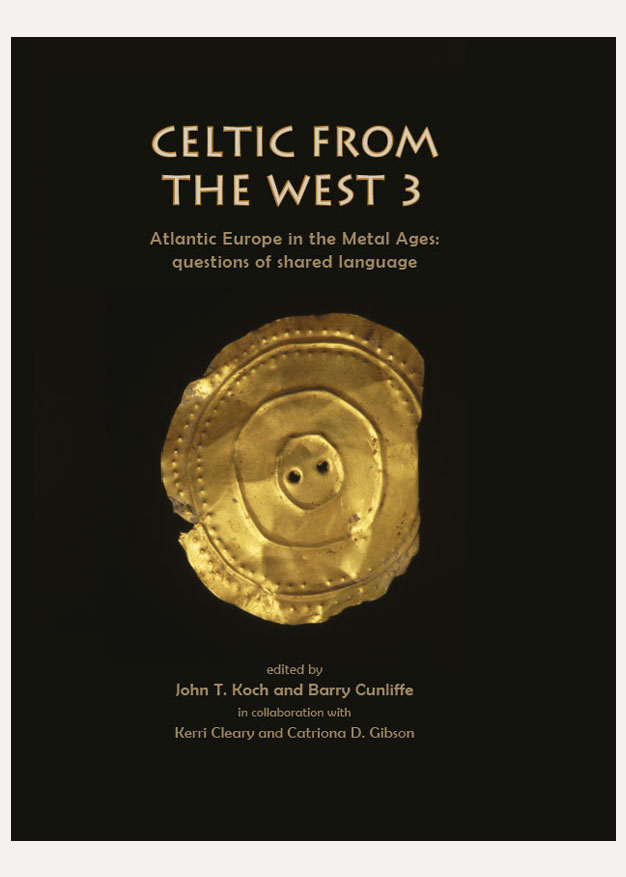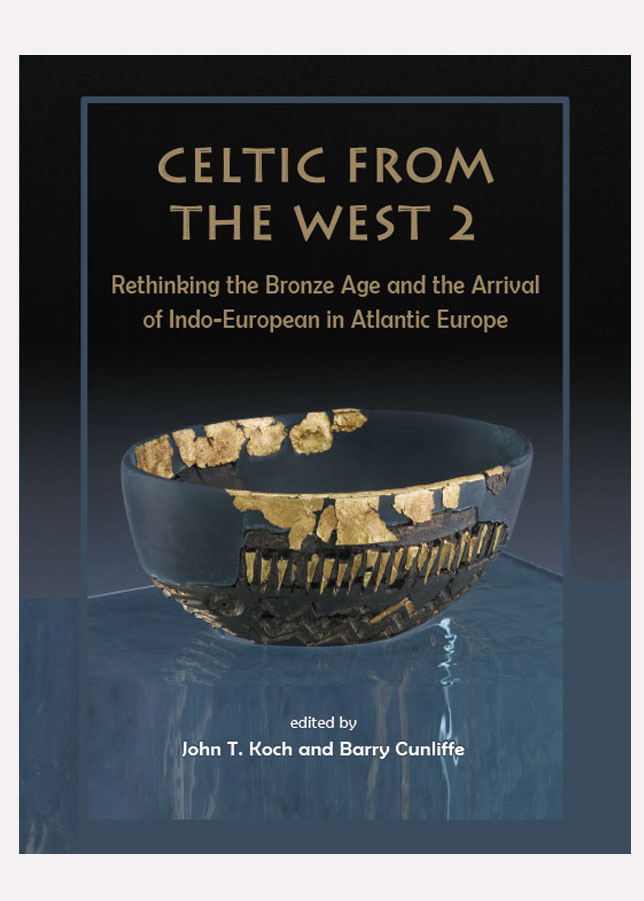The Celtic languages…emerge into our written records at the pre-Roman Iron Age. An exploration from the perspectives of three disciplines, archaeology, genetics and linguistics.

Note: out of print
This book is an exploration of the new idea that the Celtic languages originated in the Atlantic Zone during the Bronze Age, approached from various perspectives pro and con, archaeology, genetics, and philology. This Celtic Atlantic Bronze Age theory represents a major departure from the long-established, but increasingly problematical scenario in which the story of the Ancient Celtic languages and that of peoples called Keltoí Celts are closely bound up with the archaeology of the Hallstatt and La Tène cultures of Iron Age west-central Europe. The Celtic from the West proposal was first presented in Barry Cunliffe’s Facing the Ocean (2001) and has subsequently found resonance amongst geneticists. It provoked controversy on the part of some linguists, though is significantly in accord with John Koch’s findings in Tartessian (2009). The present collection is intended to pursue the question further in order to determine whether this earlier and more westerly starting point might now be developed as a more robust foundation for Celtic studies. As well as having this specific aim, a more general purpose of Celtic from the West is to bring to an English-language readership some of the rapidly unfolding and too often neglected evidence of the pre-Roman peoples and languages of the western Iberian Peninsula.
Celtic from the West is an outgrowth of a multidisciplinary conference held at the National Library of Wales in Aberystwyth in December 2008. As well as the 11 chapters, the book includes 45 distribution maps and a further 80 illustrations. The conference and collaborative volume mark the launch of a multi-year research initiative undertaken by the University of Wales Centre for Advanced Welsh and Celtic Studies [CAWCS]: Ancient Britain and the Atlantic Zone [ABrAZo].
Reviews and Quotes
One of the great delights to be gleaned from this book is the scholarly discussion and dismissal of various theories. Whether this involves archaeologists arguing the differences in cultural artefacts and concepts of Celtic identity and existence …, or the theories of geneticists …, it is all done in an even-handed manner that allows the reader to engage with the arguments and reach their own conclusions. … It’s fair to say that this book succeeds in re-thinking preceding ideas about Celts in a very approachable (and visually satisfying) way.
(Alex Lang, World Archaeology, p. 65)
Providing more questions than answers, this thought-provoking book, which will no doubt set a framework for further specialist research, is a must for those interested in the construct that we call ‘the Celts’!
(Tom Condit, Archaeology Ireland, Vol. 24, No. 4 (Winter 2010), p.47
More titles
Celtic From The West 2 – paperback
Rethinking the Bronze Age and the Arrival of Indo-European in Atlantic Europe
Barry Cunliffe (Editor); John T. Koch (Editor)
Celtic From The West 2 – hardback
Rethinking the Bronze Age and the Arrival of Indo-European in Atlantic Europe
Barry Cunliffe (Editor); John T. Koch (Editor)
Celtic From The West 3 – hardback
The Celtic languages…emerge into our written records at the pre-Roman Iron Age. An exploration from the perspectives of three disciplines, archaeology, genetics and linguistics.


